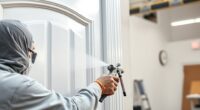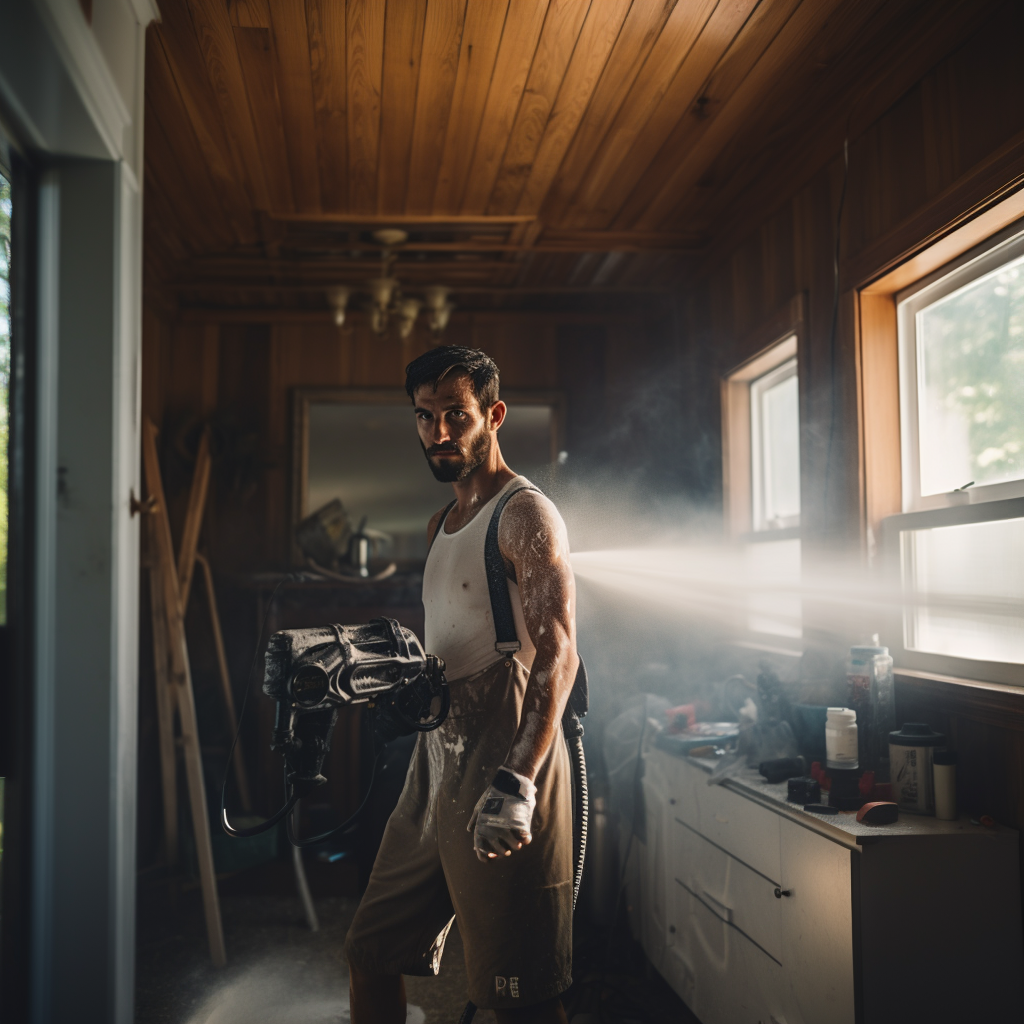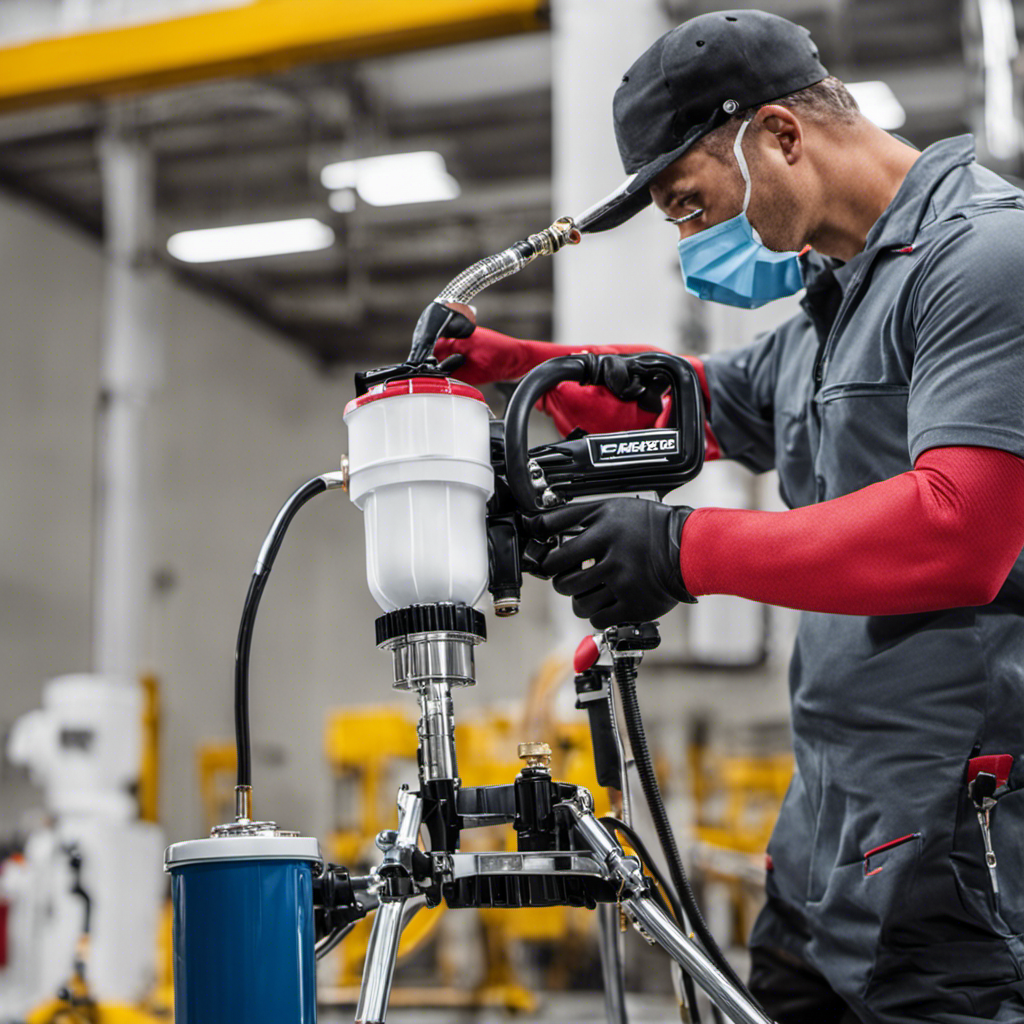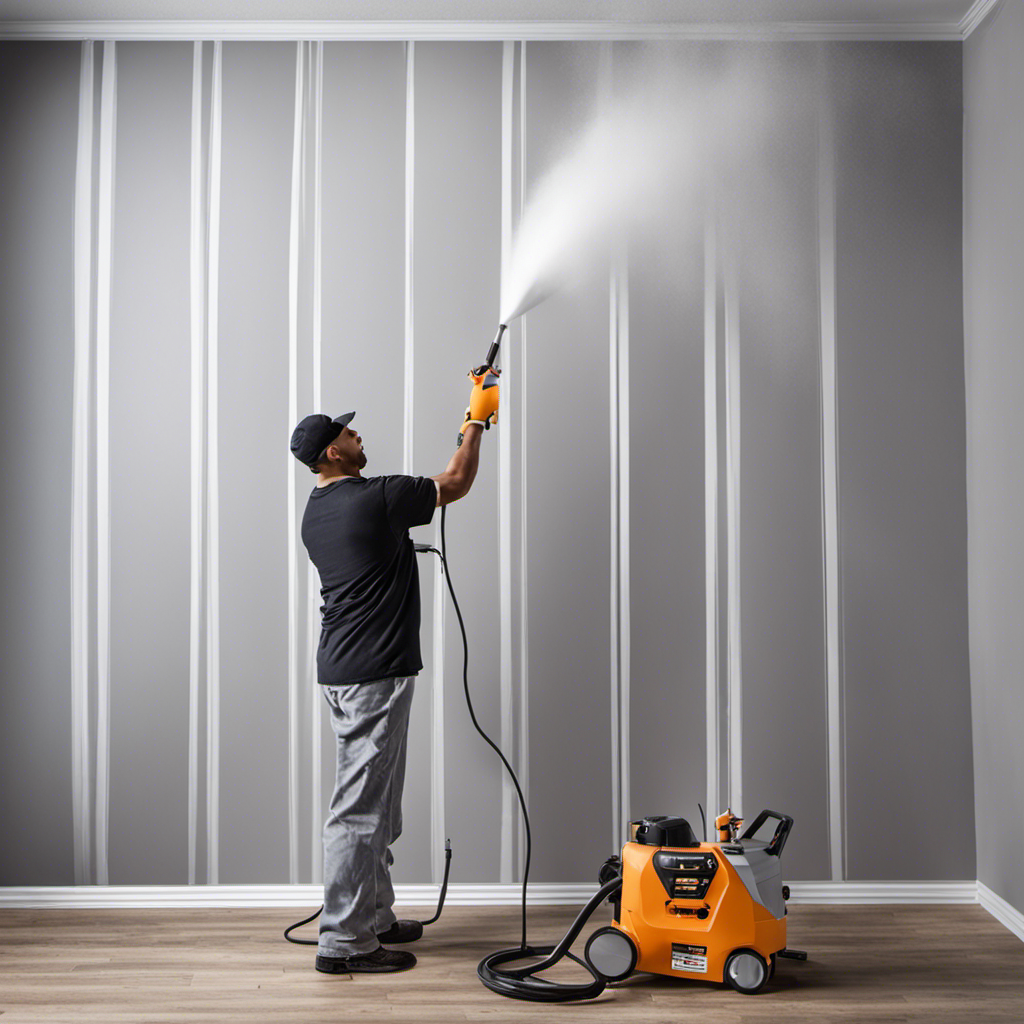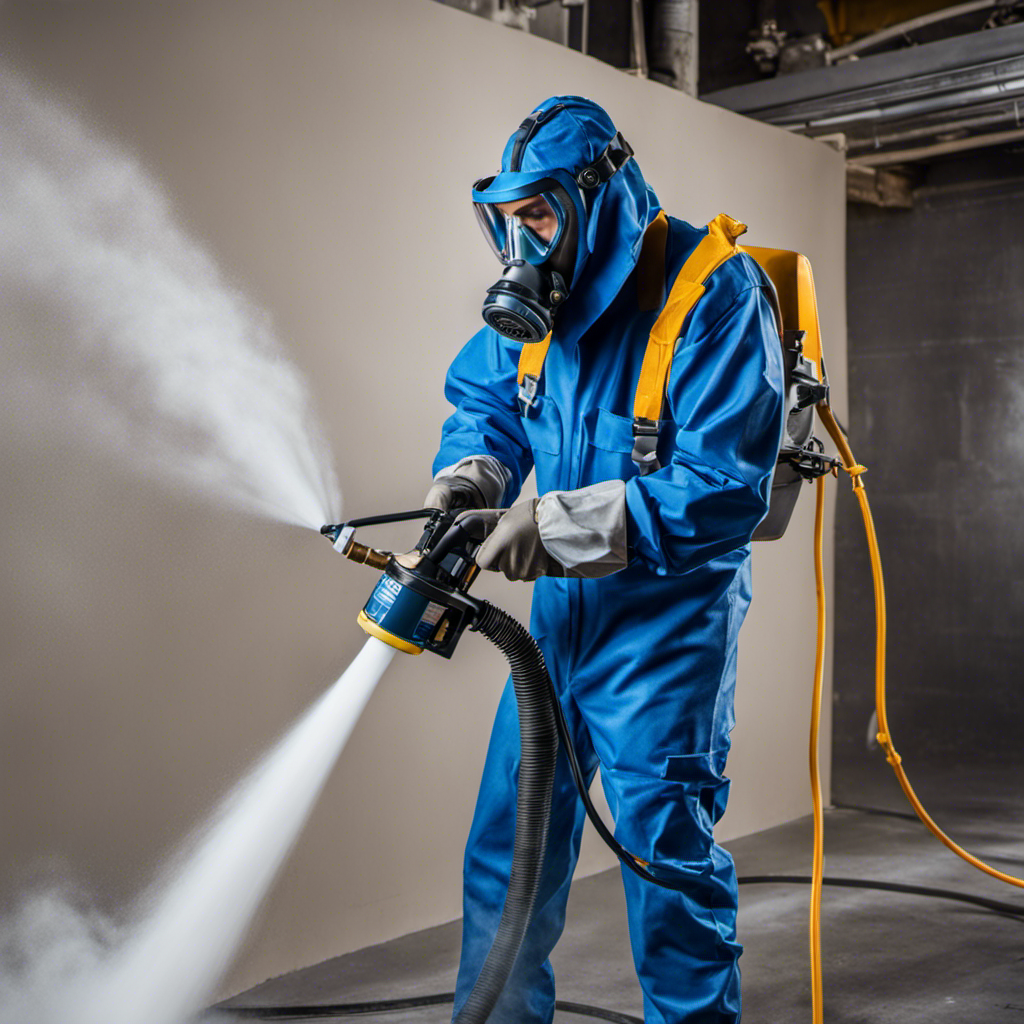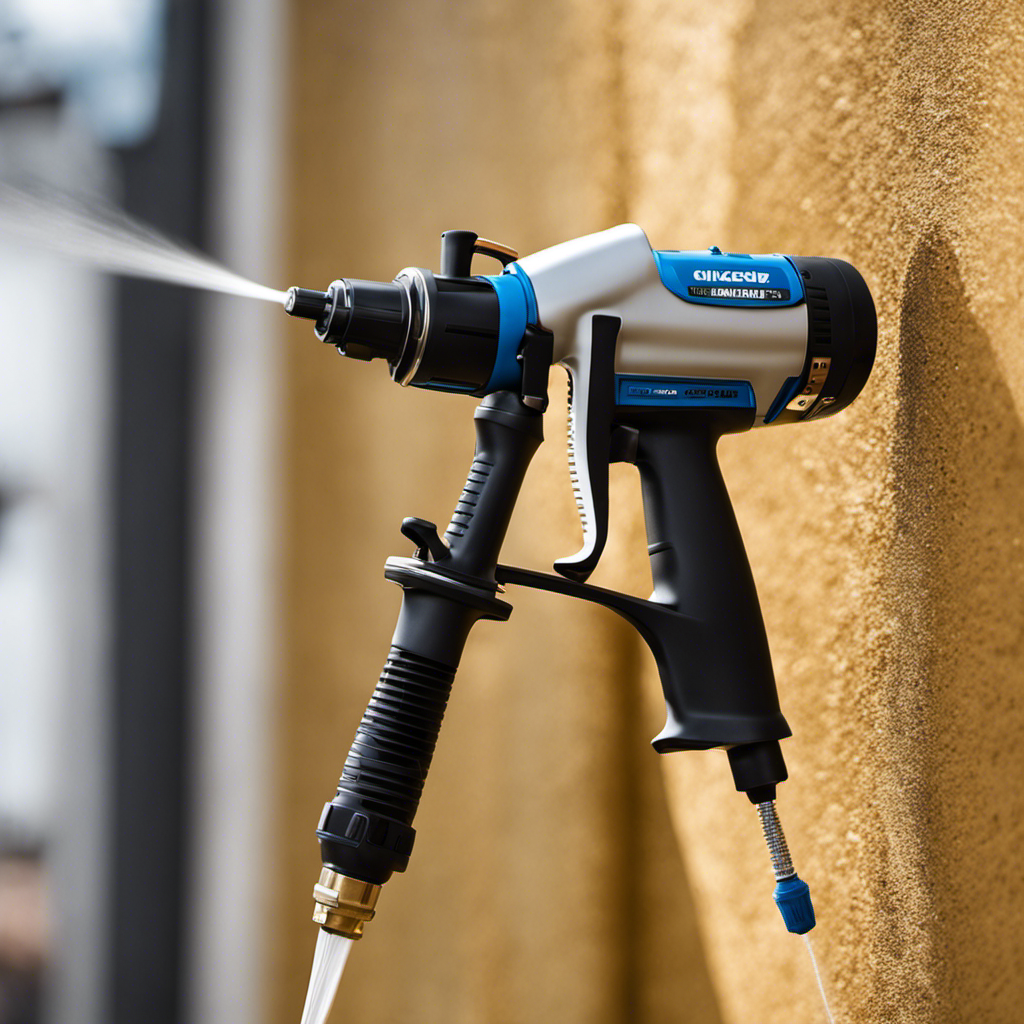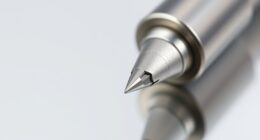If your paint sprayer is splattering and spitting, it’s usually caused by pressure issues, improper paint viscosity, or clogged tips. Make sure your pressure settings are correct—too high or too low can cause trouble. Check that your paint’s the right thickness and clear any debris from the spray tip or filter. Regular maintenance and proper adjustments can improve performance. Keep exploring to discover more tips to fix these issues quickly.
Key Takeaways
- Incorrect pressure settings can cause paint splattering and spitting; adjust pressure for smooth spray.
- Thick or thin paint viscosity leads to uneven spray; follow manufacturer thinning guidelines.
- Clogged or worn spray tips disrupt spray pattern; clean or replace tips regularly.
- Dirt or debris in filters obstruct paint flow, causing irregular spray; clean filters frequently.
- Poor equipment maintenance or malfunctions contribute to inconsistent spray; perform regular maintenance checks.
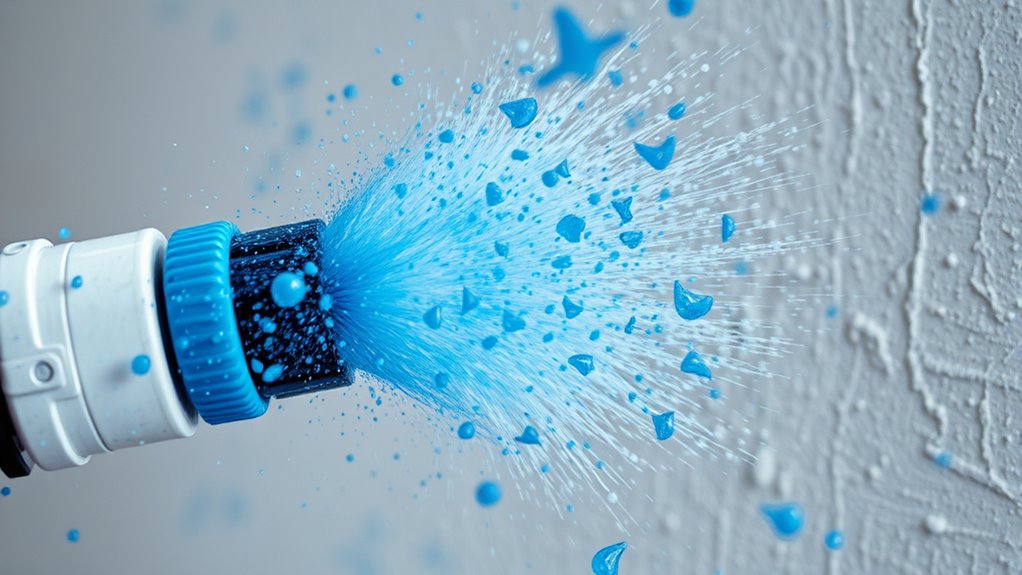
If your paint sprayer is spattering and spitting, it can be frustrating and hinder your project’s progress. One common culprit is issues with your airless spray setup or the paint’s viscosity. When using an airless spray, the paint is pushed at high pressure through a tiny nozzle, creating a fine mist that coats surfaces evenly. However, if the paint’s viscosity is too thick or too thin, it can cause inconsistent spray patterns, resulting in splatters and spits. Thick paint struggles to flow smoothly through the nozzle, leading to clogging and uneven spray, while paint that’s too thin can spray out in uneven bursts, creating splatter.
To fix this, start by checking the paint viscosity. Always follow the manufacturer’s recommendations for thinning paint, especially for airless spray systems. If the paint is too thick, add the correct amount of water or a paint thinner gradually, mixing thoroughly until it reaches a smooth, pourable consistency. Conversely, if the paint is too thin, you might need to add a thickening agent or opt for a different product better suited for spray application. Adjusting the viscosity ensures a steady, even flow, reducing the chances of spattering and spitting.
Check and adjust paint viscosity to ensure smooth flow and prevent spattering during spraying.
Another common cause is improper pressure settings on your sprayer. Too high pressure can force excess paint out of the nozzle, creating splatters, while too low pressure might cause sputtering and inconsistent spray. Experiment with the pressure adjustments to find a balance that produces a smooth, continuous spray pattern. Keep in mind that the ideal pressure often depends on the type of paint and the spray tip size.
Clogged or worn spray tips can also lead to spattering. Regularly inspect and clean your spray tips to prevent buildup that disrupts the flow. Replacing worn tips ensures you get a consistent spray pattern, which minimizes splatter. Additionally, ensure your equipment is properly maintained, and all filters are clean. Dirt or debris trapped in filters can cause irregular spray patterns, so cleaning or replacing them regularly helps maintain a clean, steady spray. Proper equipment maintenance is essential for achieving a smooth, consistent finish.
Frequently Asked Questions
Can Changing the Nozzle Size Reduce Splattering?
Changing the nozzle size can definitely help mitigate splattering. A larger nozzle size allows more paint to flow smoothly, which can handle higher paint viscosity better, minimizing splatters. Conversely, a smaller nozzle might struggle with thick paint, causing spitting. You should match your nozzle size to your paint’s viscosity; this ensures a consistent spray pattern and reduces splattering for a cleaner finish.
How Does Temperature Affect Paint Sprayer Spitting?
You might notice that higher paint temperature improves spray consistency because warmer paint flows more smoothly. Conversely, cooler temperatures can cause the paint to thicken, leading to spitting or uneven spray. To prevent this, keep your paint at an ideal temperature before spraying, ensuring consistent flow. Proper temperature management helps you achieve a smooth, even finish and reduces spitting caused by paint viscosity issues.
Is It Normal for a Sprayer to Spatter at the Start?
Imagine the initial spray from your paint sprayer like a gentle rain trying to settle into a perfect mist. It’s normal to spatter a bit at the start because of nozzle priming, which prepares the system. As you continue, the spray smooths out. If spattering persists, check for air bubbles or nozzle clogs. Just like warming up before a race, a little prep guarantees a clean, even finish.
What Maintenance Prevents Splattering Over Time?
To prevent splattering over time, you should regularly maintain your paint sprayer. Clean the filters thoroughly to prevent clogs and uneven flow. Additionally, lubricate the seals to keep them flexible and prevent leaks that cause splattering. Regular maintenance ensures smooth operation, reduces buildup, and extends your sprayer’s lifespan. By staying consistent with these steps, you’ll minimize splattering and achieve a more even, professional finish every time.
Can Using Thicker Paint Cause Spitting Issues?
Yes, using thicker paint can cause spitting issues in your sprayer. When the paint consistency is too thick, it increases the likelihood of nozzle clogging, which disrupts the smooth flow of paint. This clogging forces the sprayer to sputter and spit, making your job messier and less efficient. To avoid this, always thin your paint properly and check your nozzle regularly to guarantee consistent, clog-free operation.
Conclusion
Think of your paint sprayer as a finely tuned instrument; when it splatters or spits, it’s like a discordant note disrupting your masterpiece. By checking for clogged nozzles, proper pressure, and consistent maintenance, you can bring harmony back to your painting process. With a little care, your sprayer will glide smoothly, like a brushstroke across a canvas, leaving behind a flawless finish. Keep troubleshooting, and soon your painting project will be picture-perfect.
Franz came aboard the Paint Sprayer Zone team with a background in both journalism and home renovation. His articulate writing style, combined with a passion for DIY projects, makes him an invaluable asset. Franz has a knack for breaking down technical jargon into easy-to-understand content, ensuring that even the most novice of readers can grasp the complexities of paint sprayers.

